Consider a thin metallic sheet perpendicular to the plane of the paper moving with speed υ in a uniform magnetic field B going into the plane of the paper (See figure.) If charge den- sities σ1andσ2 are induced on the left and right surfaces, respectively, of the sheet then (ignore fringe effects.)

σ1=ε0vB2,σ2=−ε0vB2
σ1=−ε0vB2,σ2=ε0vB2
σ1=ε0vB,σ2=−ε0vB
σ1=σ2=ε0vB
The correct Answer is:c
Considering the direction of →v×→B we can understand that σ1 is positive and σ2 is negative. Surface charge density will be of same magnitude on both the faces and let it br σ.
Magnitude of electric field across the width can be written as follows:
E=σε0=Bv⇒σ=Bvε0
Hence we can write the following:
simga1=Bvε0 and σ2=−Bvε0
Hence option (c ) is correct
Topper's Solved these Questions
- BOOK - MODERN PUBLICATIONCHAPTER - MOVING CHARGES AND MAGNETISMEXERCISE - COMPETITION FILE (C. MULTIPLE CHOICE QUESTIONS)28videos
MOVING CHARGES AND MAGNETISM
- BOOK - MODERN PUBLICATIONCHAPTER - MOVING CHARGES AND MAGNETISMEXERCISE - COMPETITION FILE (D. MULTIPLE CHOICE QUESTIONS)10videos
MOVING CHARGES AND MAGNETISM
- BOOK - MODERN PUBLICATIONCHAPTER - MOVING CHARGES AND MAGNETISMEXERCISE - COMPETITION FILE (A. MULTIPLE CHOICE QUESTIONS)38videos
MOVING CHARGES AND MAGNETISM
- BOOK - MODERN PUBLICATIONCHAPTER - MAGNETISM AND MATTEREXERCISE - CHAPTER PRACTICE TEST FOR BOARD EXAMINATION16videos
MAGNETISM AND MATTER
- BOOK - MODERN PUBLICATIONCHAPTER - NUCLEIEXERCISE - CHAPTER PRACTICE TEST FOR BOARD EXAMINATION15videos
NUCLEI
Similar Questions
In the fig shown XX represents a vertical plane perpendicular to the plane of the fig. To the right of this plane there is a uniform horizontal magnetic field B directed into the plane of the fig. A uniform electric field E exists horizontally perpendicular to the magnetic field in entire space. A charge particle having charge q and mass m is projected vertically upward from point O. It crosses the plane XX after time T. Find the speed of projection of the particle if it was observed to move uniformly after time T. It is given that qE = mg.
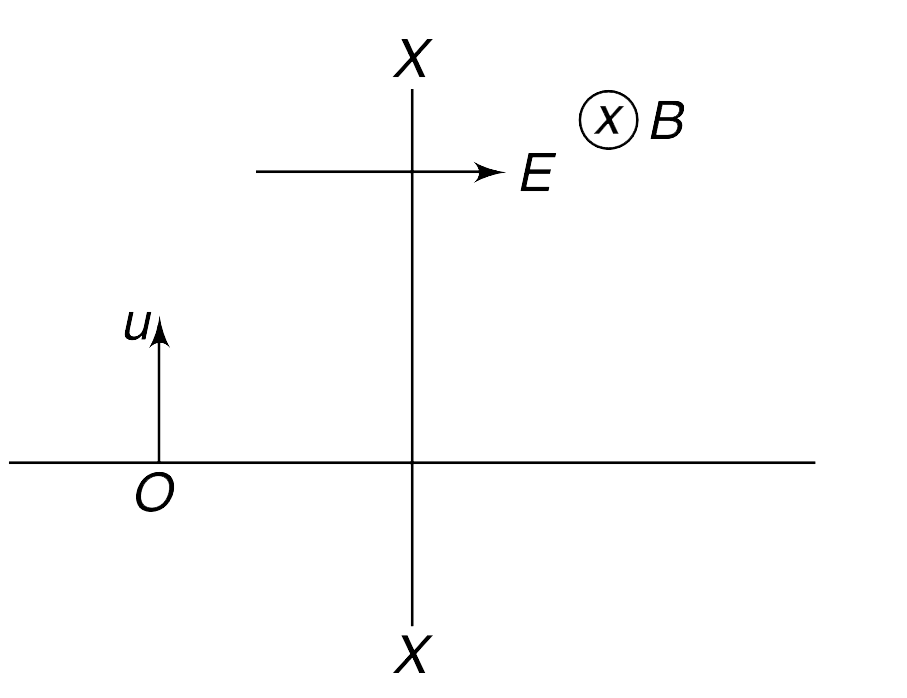 View Solution
View SolutionThere is a magnetic field acting in a plane perpendicular to this sheet of paper, downward into the paper as shown in the figure. Paticles in acuum move in the plane of the paper from left to right. The path indicated by the arrow could be travelled by
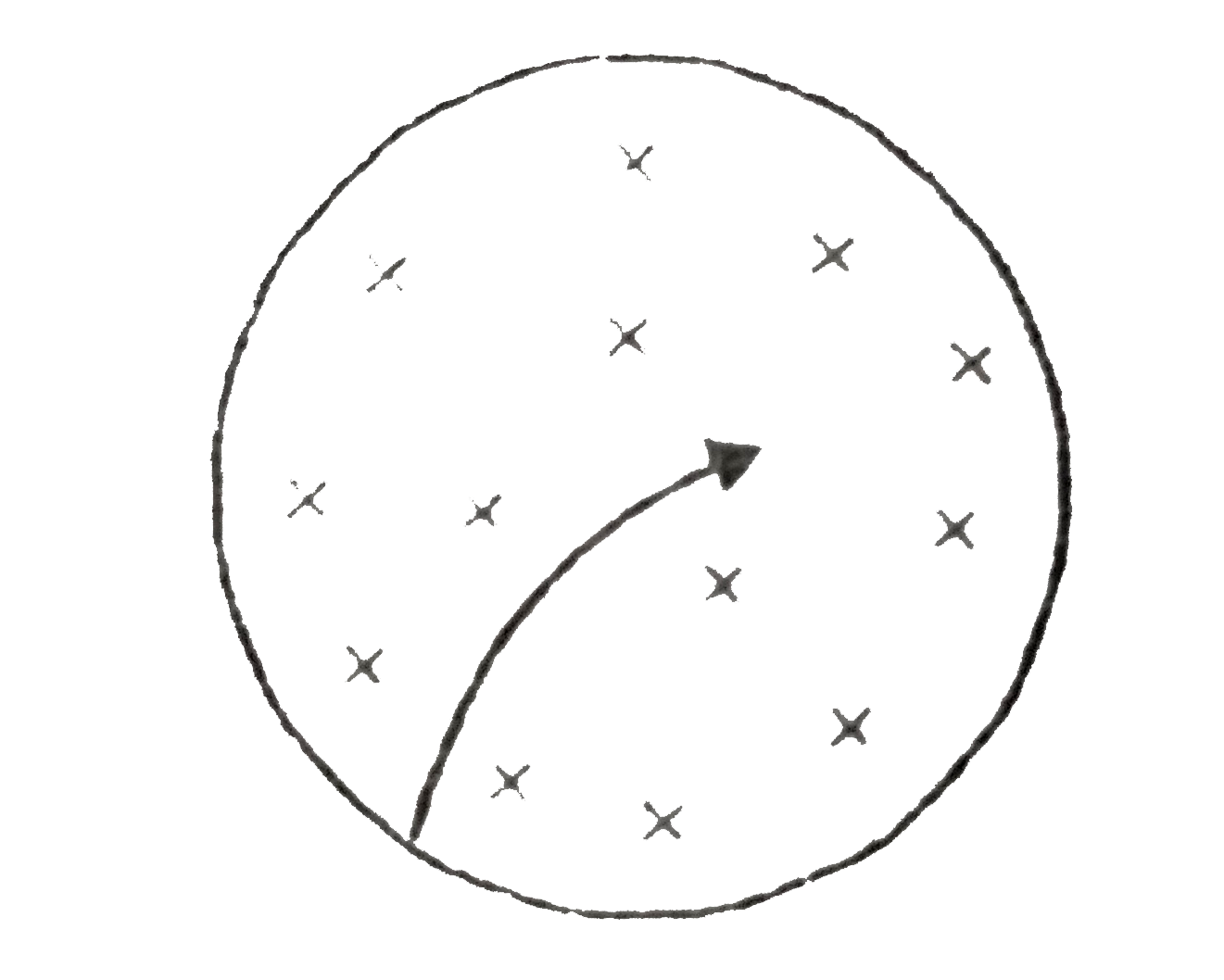 View Solution
View Solution
Knowledge Check
- Question 1 - Select One
A metallic square loop ABCD is moving in its own plane with velocity v in a uniform magnetic field perpendicular to its plane as shown in the figure. An electric field is induced
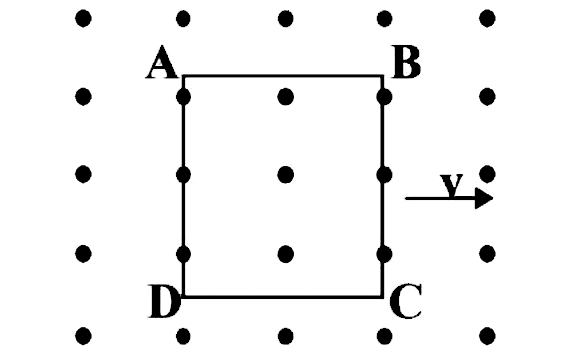 Ain AD, but not in BCBin BC, but not in ADCneither in AD nor in BCDin both AD and BC
Ain AD, but not in BCBin BC, but not in ADCneither in AD nor in BCDin both AD and BC - Question 2 - Select One
A wire KMN moves along the bisector of the angle θ with a constant velocity v in a uniform magnetic field B perpendicular to the plane of the paper and directed inward. Which of the following is correct?
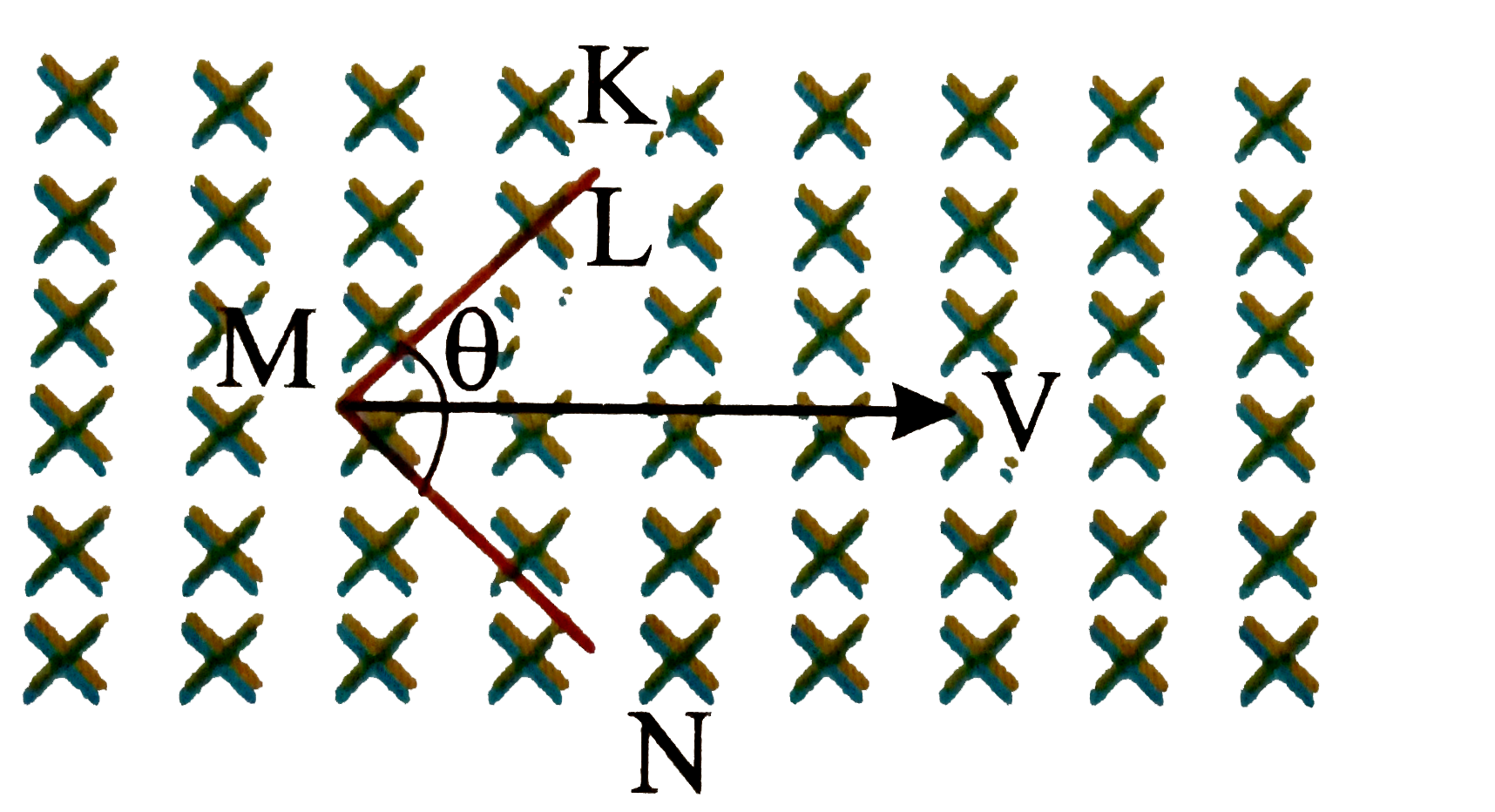 AEffective length of the wire is 2Lsinθ2BE.m.f induced between K and N is 2BLVsinθ2CThe shape of KMN is immaterial, only the end points KN are important.DAll the above
AEffective length of the wire is 2Lsinθ2BE.m.f induced between K and N is 2BLVsinθ2CThe shape of KMN is immaterial, only the end points KN are important.DAll the above - Question 3 - Select One
A rectangular loop has a sliding connector PQ of length l and resistance R(Ω) and it is moving with a speed v as shown. The set-up is placed in a uniform magnetic field going into the plane of the paper. The three currents I1,I2 and I are
 AI1=−I2=Blv6R,I=2Blv6RBI1=I2=Blv3R,I=2Blv3RCI1=I2=I=BlvR,DI1=I2=Blv6R,I=Blv3R
AI1=−I2=Blv6R,I=2Blv6RBI1=I2=Blv3R,I=2Blv3RCI1=I2=I=BlvR,DI1=I2=Blv6R,I=Blv3R
The figure shows three infinite non-conducting plates of charge perpendicular to the plane of the paper with charge per unit area +σ,+2σ and −σ. Find the ratio of the net electric field at that point a to that at point B.
 View Solution
View SolutionA metalic square loop ABCD is moving in its own plane with velocity v is in a uniform magnetic field perpendicular to its plane as shown in the figure . An electric field is induced
 View Solution
View SolutionA uniform magnetic field exists in the plane of paper pointing from left to right as shown in figure. In the field, an electron and a proton move as shown. The electron and the proton experience:
 View Solution
View SolutionA metallic rod of length l is hinged at the point M and is rotating about an axis perpendicular to the plane of paper with a constant angular velocity ω. A uniform magnetic field of intensity B is acting in the region (as shown in the figure) parallel to the plane of paper. The potential difference between the points M and N
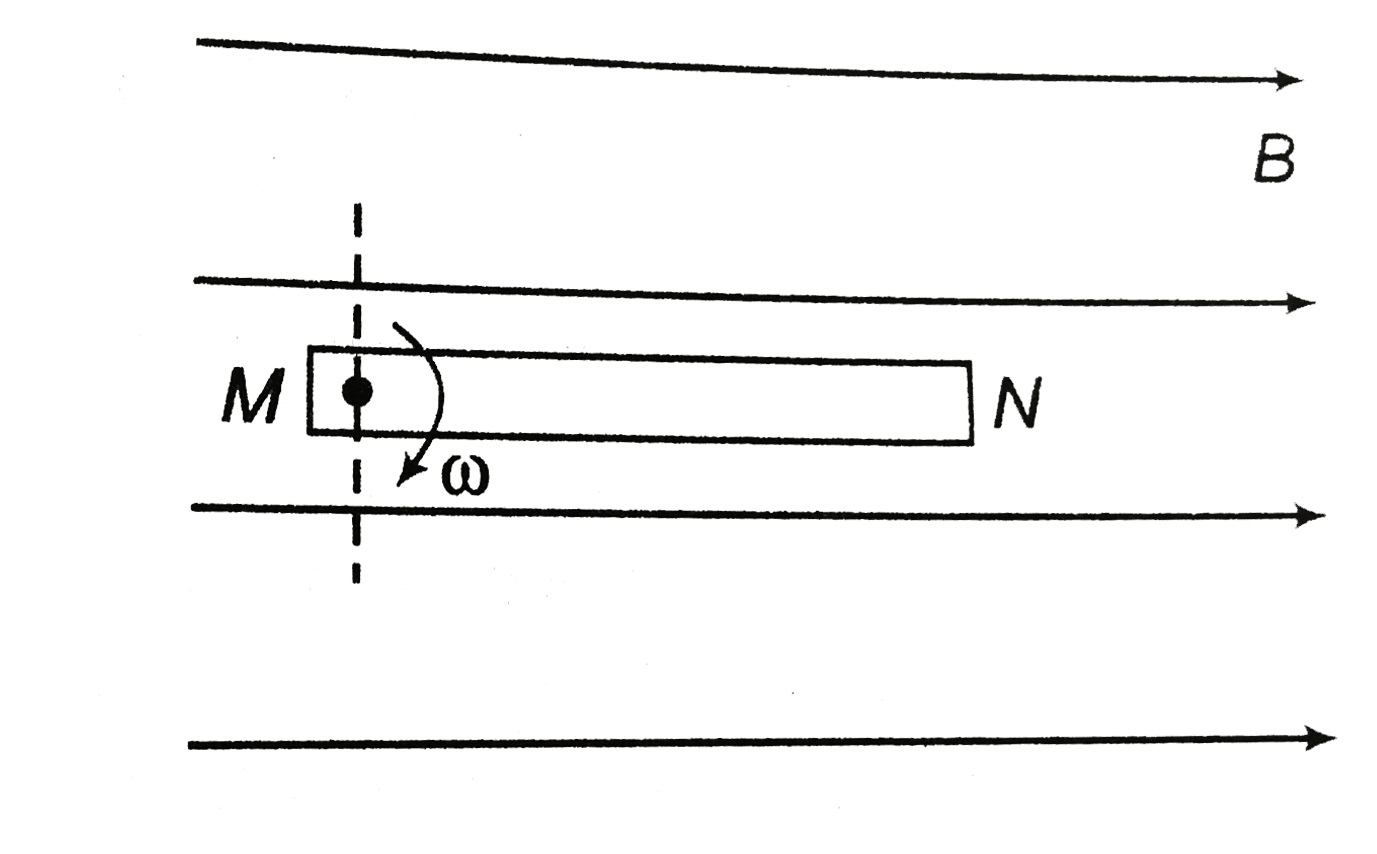 View Solution
View SolutionA conducting rod PQ of length L=1.0m is moving with a uniform speed v=2.0ms−1 in a uniform magnetic field B=4.0T directed into the plane of the paper.
A capacitor of capacity C=10μF is connected as shown in , then
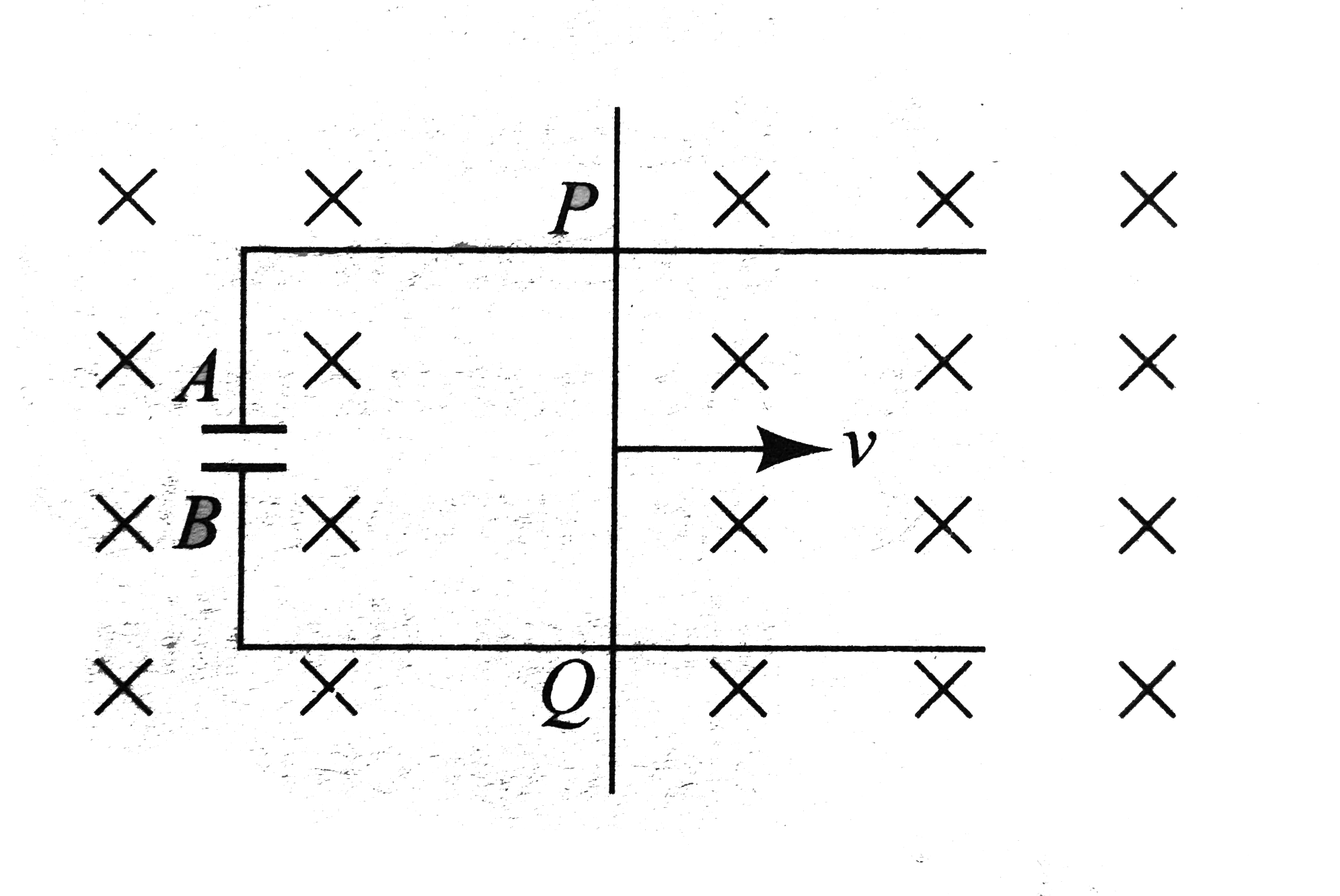 View Solution
View Solution

